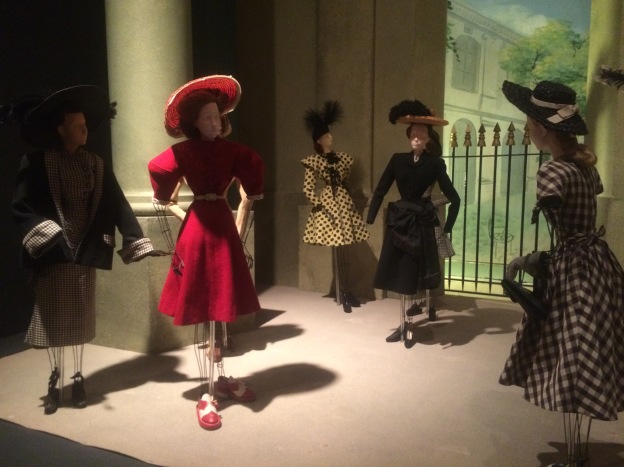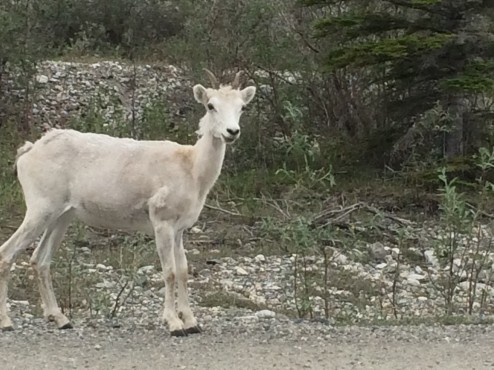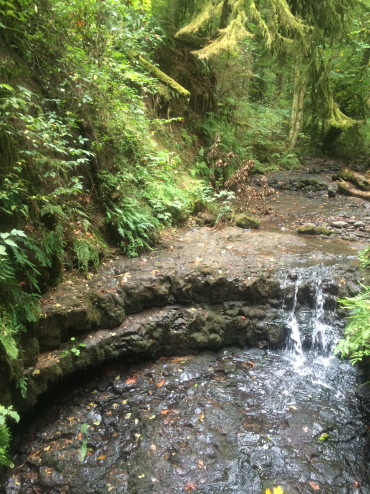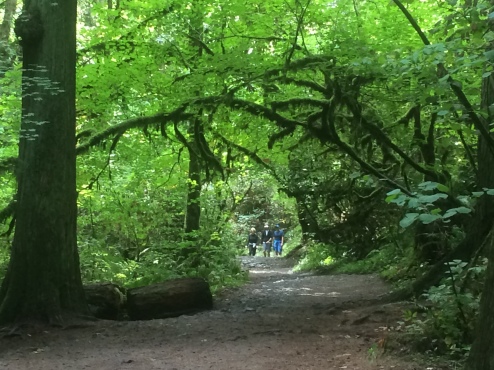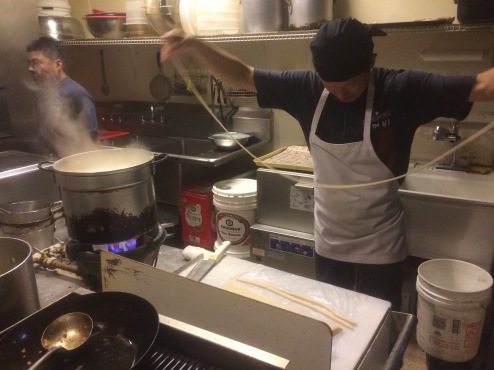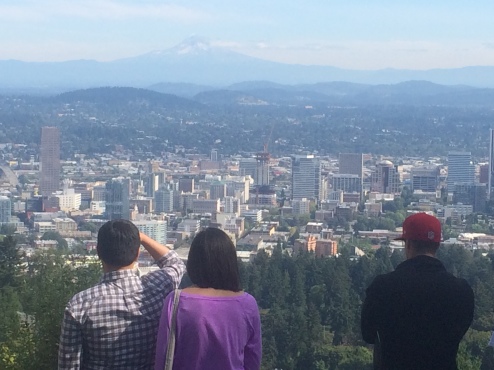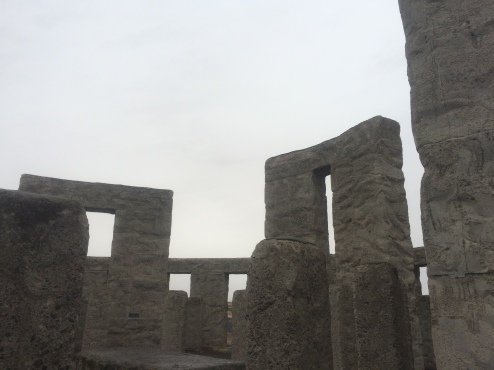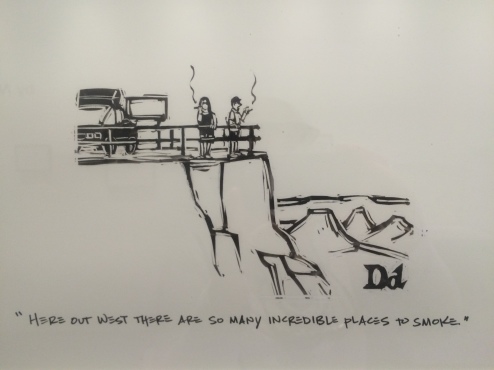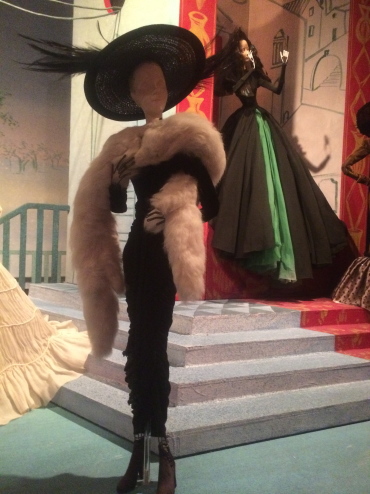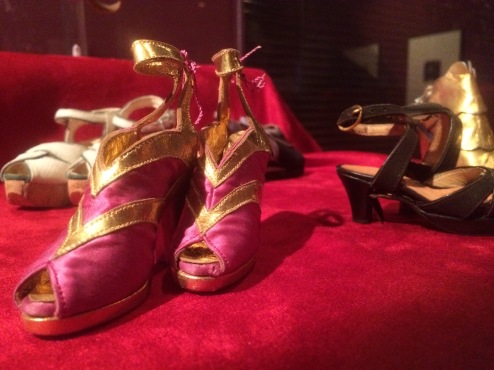These last 4 months of travel, above and below the Arctic Circle, have been remarkable for amazing sights of wildlife (Dall Sheep below in Tombstone NP Canada, Yukon Territory), tidewater glaciers, Northern Lights, and lots and lots of water.
Query: Our favorite place among ALL of the beauties in British Columbia, and the Yukon and Northwest Territories of Canada, and the State of Alaska?
Answer: The rain forests, carpeted with thick moss, with towering fern-filled dripping wet canyon walls, the result of year-round creeks and non-stop fog and rain in Alaska’s Tongas National Forest.
We did not complain one bit about the unusually wet and cool summer this year in the Far North. As Californians in our 4th year of drought, we value moisture as much for its role in agricultural production as the quality of the air we breathe. Driving south towards home, we knew we would really miss the lush, moist, and drippy green forests, even though it meant a welcome end to the horrible mosquito and gnat infestations common everywhere in the North. These do not end in August as rumored, but continue into the “Third Hatch”, if there is sufficient moisture. They keep breeding until the snow falls or it reaches 10 degrees below zero…and that is not a great time for us to be traveling without chains. Soon to be remedied.
Lucky for us, we call Portland our second home. What is the appeal, besides…moss? Is it because of our warm and supremely hospitable pals residing there? Is it the Big City sophistication paired with a water culture because it sits on two rivers? Yes, and…..
It offers the residents all of the following benefits: 1) the largest per capita percentage of bicycle commuters outside of Europe; 2) the University student population (Reed, U of P, Portland State, OSHU, etc.), and coffee/art house culture for 40+ years; 3) an intense fresh/local food scene rivaling San Francisco and Berkeley (in one day we watched (and ate) fresh mozzarella being made in a high end grocery, and ate noodles being hand stretched and cut nearly table side in a 12 seat Korean Restaurant (above)); and 4) the preponderance of ‘Urban Villages’, small neighborhood identities that reminds us of our home town of Albany, CA, an urban village by the San Francisco Bay. Best of all, hikes in Portland’s city park (above) with draping moss, creeks, and dripping fern canyons, rival the Tongas National Forest in Alaska…without the added 1,780 miles of driving for access!!
In an hour we can be at the glaciated, volcanic Mt. Hood (above, Downtown Portland with Mt. Hood) for year round winter sports, or bodysurf in the Pacific Ocean in an hour. Do you want big winds and hot weather for sailing and kite surfing? or perhaps 90 dramatic, cascading waterfalls? The Columbia River Gorge, just upriver from Portland, has it all plus one of the most interesting small museums we have ever visited. The Maryhill Museum of Art is a converted mansion built by Sam Hill, who came to the Gorge to build a Quaker community. It failed, and he never furnished the mansion built for his daughter; it remained empty of furniture until European Royalty pals he had rescued during the War, furnished it with furniture from their castles. We enjoyed riverside camping nearby, with a view of the Sam Hill’s full size ‘Stonehenge’ memorial, the first American memorial to WWI soldiers.
The museum has some great, odd exhibits like chess sets, the largest exhibit of Auguste Rodin “draft” pieces in plaster of his famous sculptures, like ‘The Kiss’, ‘The Burgers of Calais’, and ‘The Thinker”). It also exhibited political cartoons as featured below, and an amazing rotating exhibition of “Theatre De La Mode”, miniature haute couture fashion display (featured image).
At the end of WWII, when Paris was stripped of luxuries due to the Nazi occupation, the Haute Couture fashion houses needed a way to “strut their stuff”…but not using full size samples on a runway. Instead, in 1945 Nina Ricci and her son Robert utilized a fashion presentation used in the Middle Ages, and put the miniaturized designs on 27-inch wire armatures with lovely vague Plaster of Paris heads, in lush sets, with tiny, beautifully crafted accessories: hats, gloves, purses, and shoes. Over 100,000 people attended the opening in Paris. The fashion houses that displayed there included Balenciaga, Schiaparelli, Balmain, Cocteau, and Cartier, and they agreed to send these dolls to London, Milan, New York, San Francisco and other European cities with hopes that a collaboration would revitalize the fashion industry. American houses copied the designs with mass produced affordable fabrics and began the American “ready-made” fashion industry. In 1990 the doll collection was exhibited at the Louvre in Paris.
The Maryhill Museum of Art has one of the largest collections of “Theatre de Le Mode” dolls, and half of the pieces at any time are out on loan to curated exhibitions worldwide. After the War, the resurgence of fashion helped lift the spirits of women worldwide who had endured wartime losses, injuries, rationing, nightly bombing, and the destruction of much infrastructure. I can tell you just thinking about a pair of shoes in a 9D size like these tiny accessories would lift MY spirits in those circumstances!

